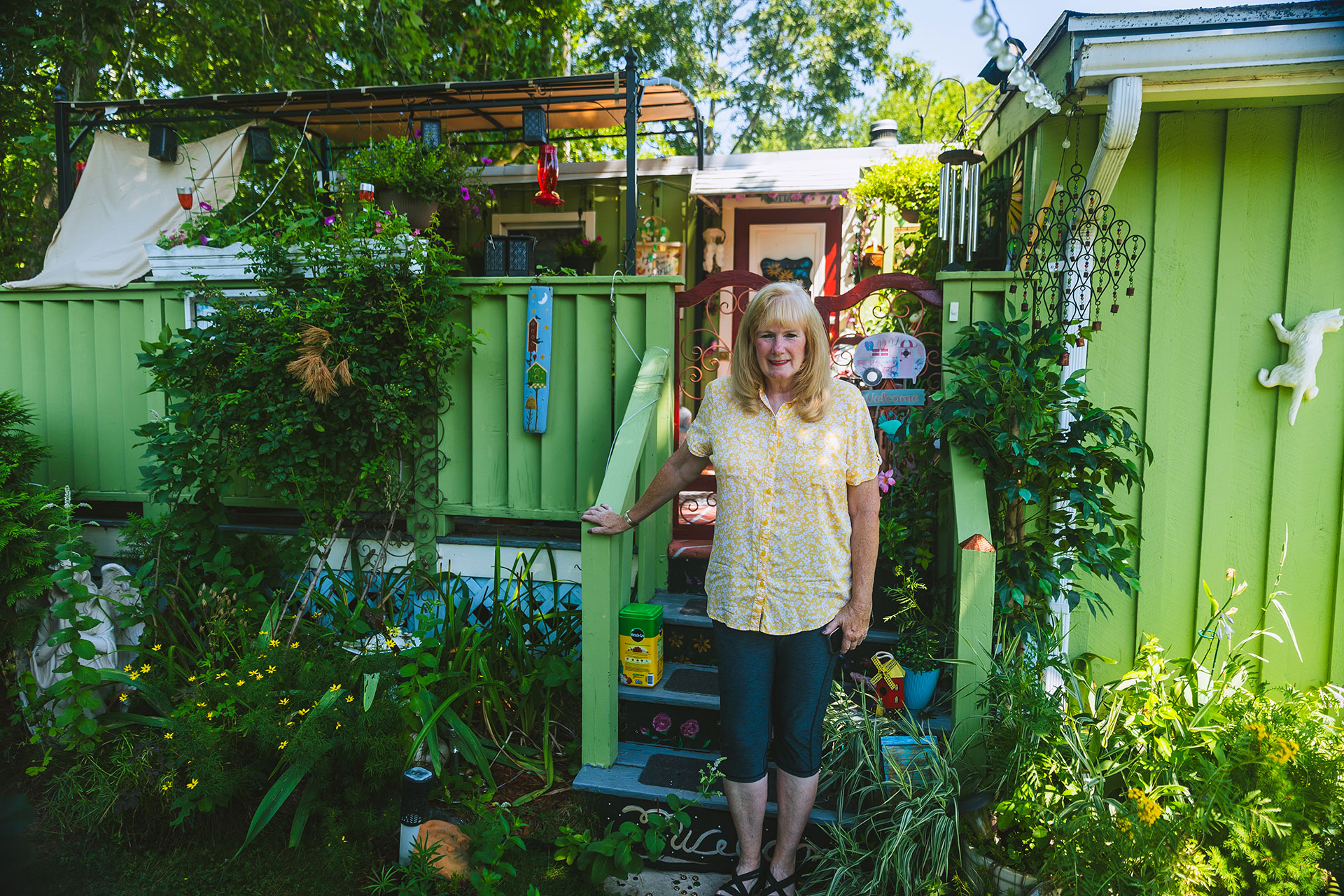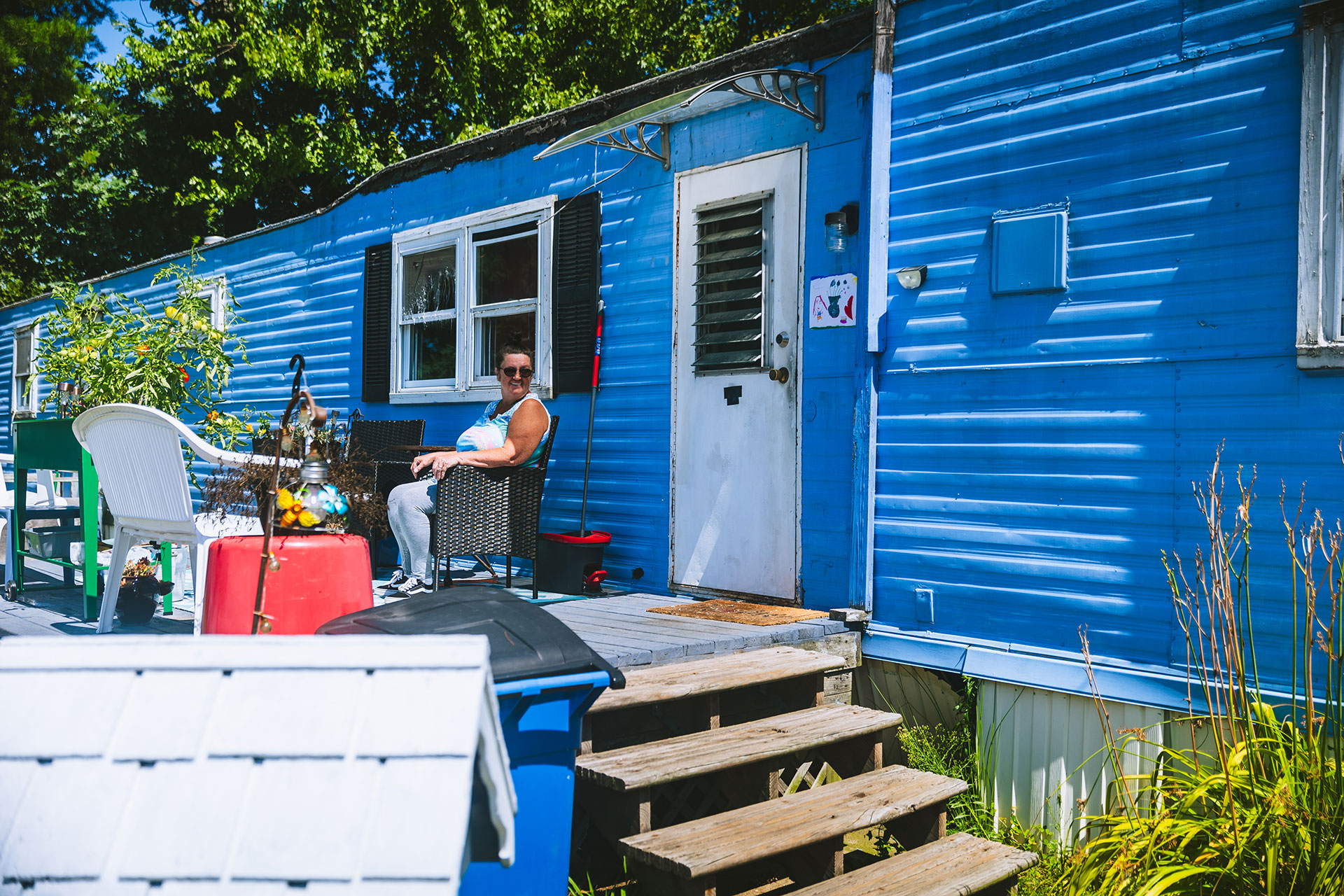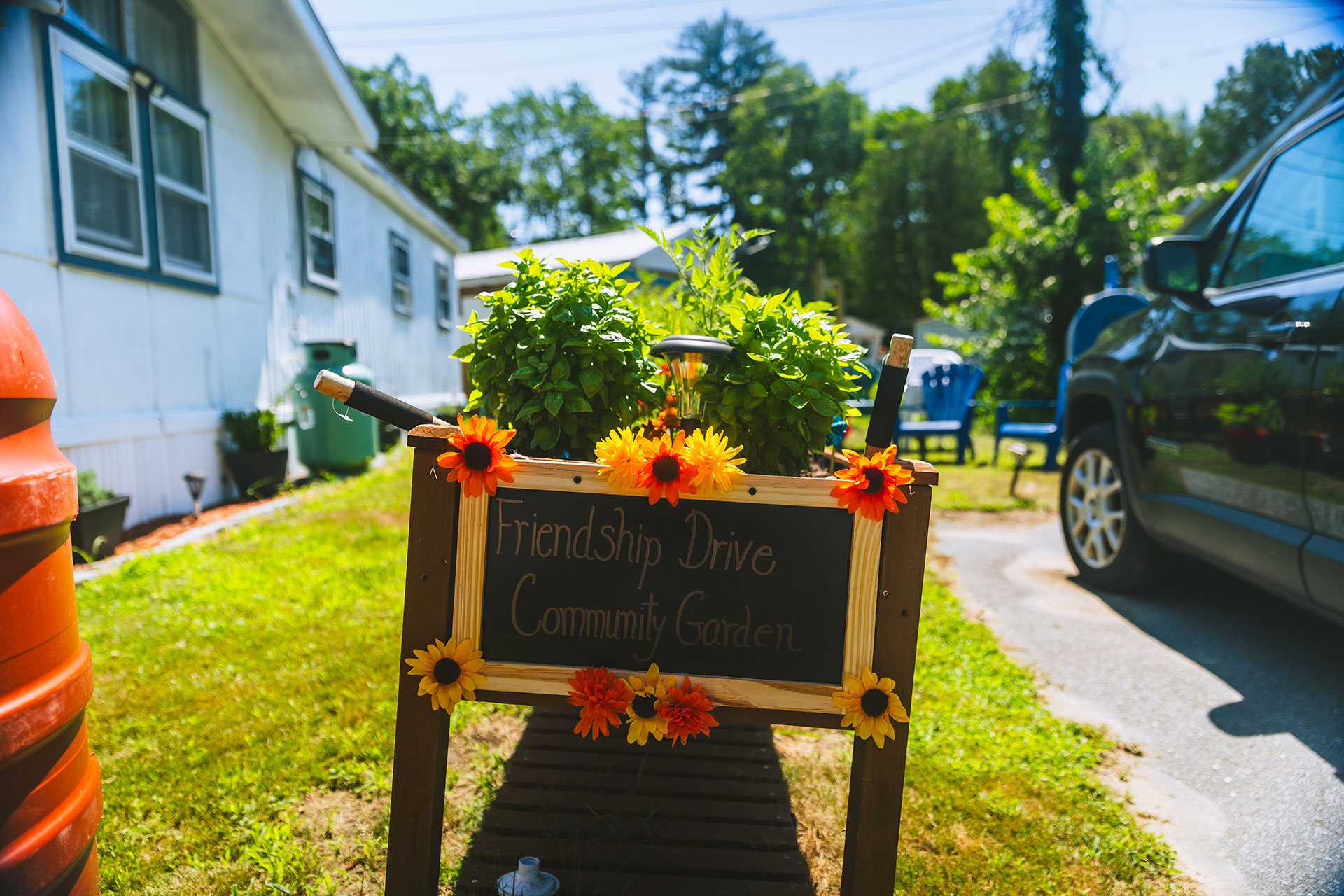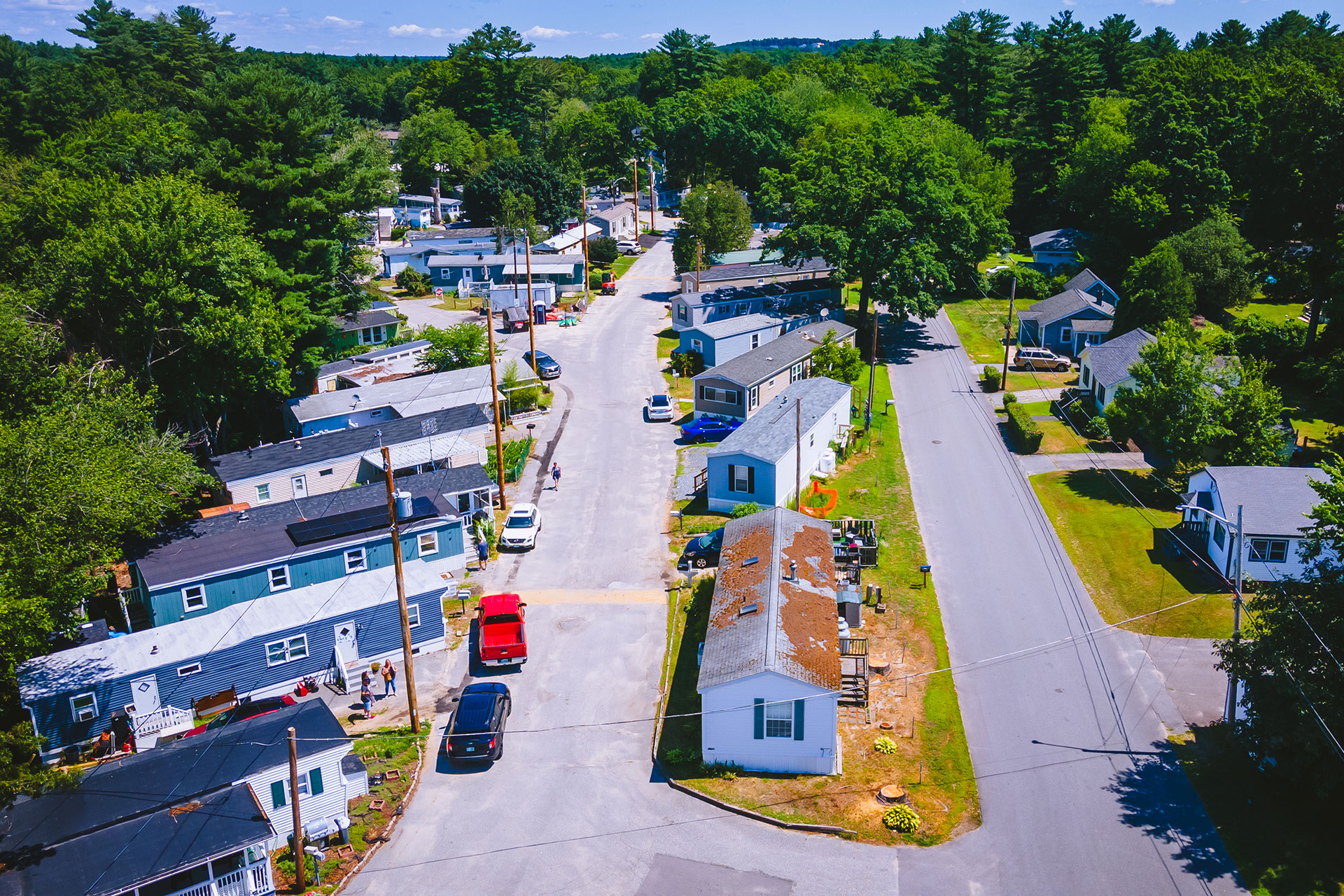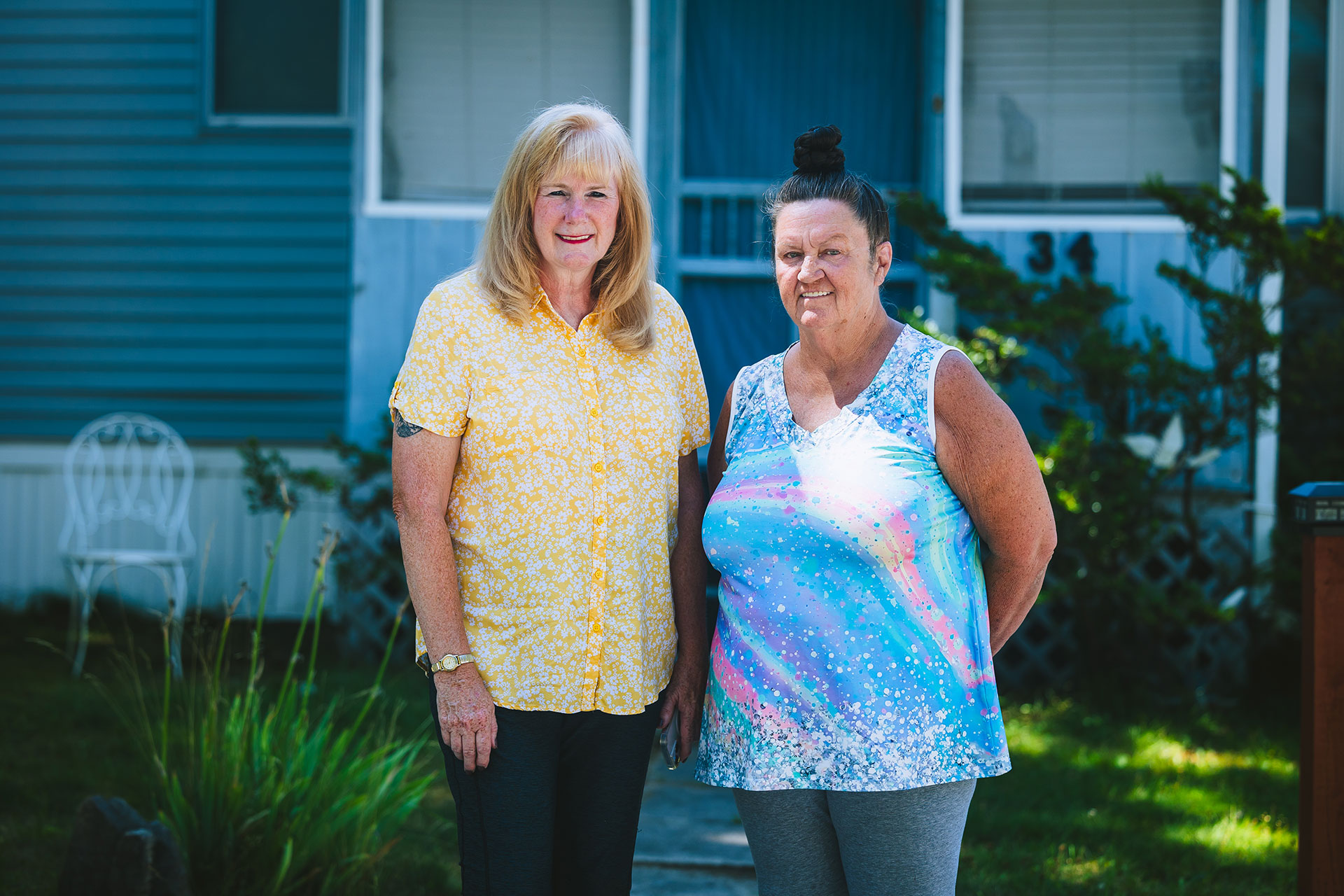Aerial view of Friendship Drive Cooperative, a resident-owned community located in Salem, NH.
Photo: Steve Osemwenkhae
Manufacturing affordable homeownership, one unit at a time
By Gabriella Chiarenza
Manufactured homes are making a comeback. With much of the country’s for-purchase housing out of affordable reach for a growing number of households, these inexpensive homes offer a unique onramp into homeownership.
Manufactured housing residents, particularly those in land-lease communities, also are vulnerable to some real challenges. Anywhere manufactured home communities hope to grow and thrive, builders and residents must contend with the perceptions, policies, and financial realities around this type of housing.
A one-size-fits-all approach to these challenges won’t work everywhere. But applied where they fit best, new preservation and development approaches could help grow the stock and stability of manufactured homes available for affordable homeownership.
“Manufactured housing could help with the housing supply shortage, especially at the low-cost end, which I think is the hardest part,” said Eileen Divringi, a community development research manager at the Philadelphia Fed studying this type of housing.
Manufactured units evolved from trailers into permanent homes
In contrast to site-built homes, manufactured homes are built in a factory, then transported in one or more segments and installed on a plot of land. Some of these homes are arranged in park communities. About 6.7 million US households live in manufactured homes.
Today’s manufactured homes have their roots in 1920s-era towable camping trailers. After World War II, these trailers transformed into more permanent single- and double-section units, providing affordable homes for returning veterans and growing families.
As the housing model evolved, the US Department of Housing and Urban Development developed and periodically updated a set of rules—the “HUD Code”—to set construction standards for the homes’ safety and quality. Newer manufactured home models can be indistinguishable from single-family homes in design and quality once installed on site.

“Manufactured housing could help with the housing supply shortage, especially at the low-cost end, which I think is the hardest part.”
– Eileen Divringi, community development research manager, Philadelphia Fed
Just under half of manufactured home households own both their home and the land it sits on, a situation similar to typical site-built home owners. An additional quarter are renters living in manufactured homes. The remaining quarter of households own their homes but rent the land beneath.
This last group enters into a unique land-lease agreement, siting their homes on land owned by someone else to whom they pay a monthly lot rent. Land-lease manufactured homes may be grouped into parks, often with one investor owning all of the land under the homes and common spaces.
Efficient, inexpensive, and in demand
Available in a wide range of sizes and designs, manufactured housing units are smaller by an average of about 1,000 square feet than single-family homes. They’re also more affordable. Excluding any land costs, the average manufactured home purchase price ($108,100 in 2021) comes in at about half the cost per square foot of a new site-built home.
Over the last decade, about ten percent of the country’s newly produced homes each year were manufactured, and that number is rising. The percentage of buyers under age 45 choosing manufactured homes is also increasing.
That’s notable, given the relatively affordable price. More than 70 percent of households buying manufactured homes in 2021 earned less than $75,000 per year. About two-thirds of new manufactured homes could be purchased for less than $125,000 that year, minus land costs. By contrast, no new site-built homes were available at that price.
Hoping to better identify manufactured home communities
Meanwhile, existing manufactured home communities may be hiding in or missing from data sources because of how they are categorized as structures. To maintain these affordable homes, it’s vital to know where they are in the first place.
Divringi of the Philadelphia Fed scoured and cross-checked multiple data sources looking for them in Pennsylvania, New Jersey, and Delaware, identifying more of the overlooked units through this unique method. She discovered that manufactured housing isn’t just in rural places or more disinvested areas as some people assume. It surfaced more than expected in middle-income neighborhoods and within metropolitan areas.
“People don’t have a good sense of how many of these there are, where they are, and how they contribute to the existing stock of affordable options for low-income homebuyers,” Divringi explained. “When these communities are invisible, you can’t identify solutions to their challenges.”
A housing arrangement with unique vulnerabilities
And there are many challenges, starting with financing. Even if you own the land under your manufactured home, in most states you need to take further steps to title your home as real estate to qualify for a mortgage. Depending on where you live, it can be a complex process that some buyers decide to avoid—instead financing the home with a personal property loan.
As explained in another Fed Communities article, this kind of financing carries a higher interest rate and fewer borrower protections than a traditional mortgage loan. Because they own their homes but rent the lot, manufactured home owners in land-lease communities who cannot buy their home outright may end up with personal property loans, too.
Unexpected cost changes also may threaten homeowner stability. A park owner may raise lot rents in some cases with little notice or to levels a manufactured home owner cannot afford. The park owner could also decide to sell the park to someone else.
Sometimes that means a new park owner imposes higher rents which some residents can’t afford. In other instances, the park owner may choose to sell the land to be used for an entirely different purpose, like building a hotel. As a result, the homeowner may have a limited time to move their home out of the park.
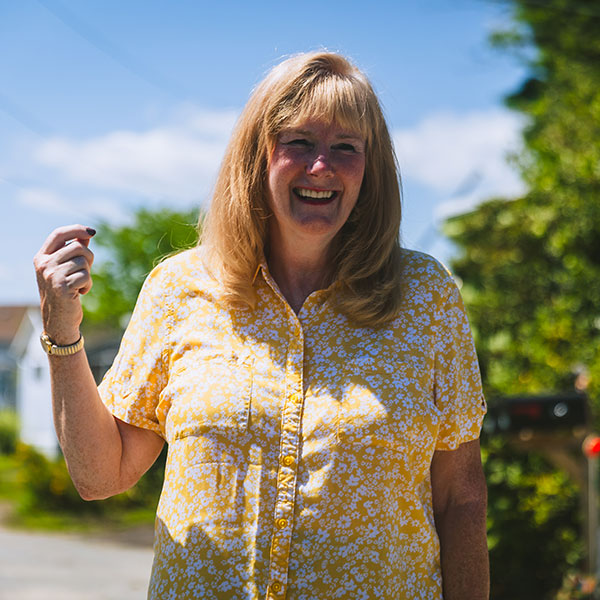
“We have a lot of low-income people in our park. If we raise the lot rent too high, they’re going to be driven out. Our board tries as hard as we possibly can to keep the rent as low as it can be so they can stay.”
– Pam Rothgaber, a resident-owned community board president in Salem, NH
Manufactured homes aren’t that mobile
Relocating a manufactured home is logistically complicated and can cost $5,000 to $30,000. Relocation assistance is available in some states but may not cover all costs, and some units may be in too poor condition to move safely.
Even if a homeowner can afford the cost and their home is sturdy enough to move, they’ll need a new lot to place the home on. Finding a new site is a particularly difficult hurdle in areas where land costs are high, nearby park vacancies scant, or local zoning codes exclude manufactured housing. If they cannot afford to move their home, a homeowner may have to forfeit it—even if they own their home outright.
In many parks, aging infrastructure poses problems for homeowners as well. Updating a failing utility system can cost tens of thousands of dollars, and that cost may be passed along in land-lease parks to homeowners in the form of a sudden lot rent hike.
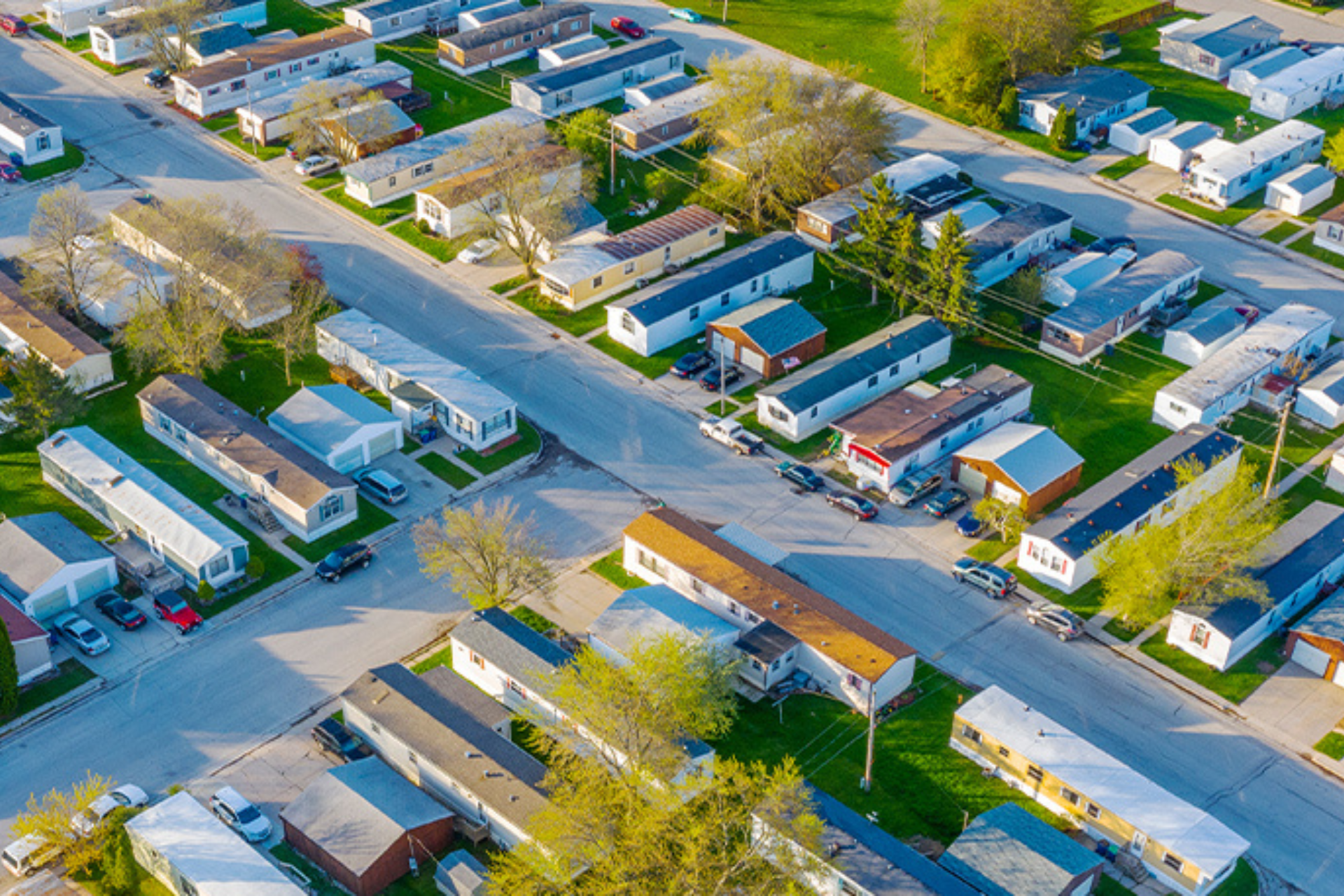
Want to learn more about manufactured homes? Check out the Philadelphia Fed’s recent virtual conference on this topic.
The opportunity for residents to take control of their own communities
Residents of land-lease parks facing these pressures have an option if their park goes up for sale: buying the park together and running it as a cooperative. This resident-owned community model started up 40 years ago in New Hampshire.
In a handful of states, residents in a privately-owned park must receive notice 60 days in advance if their park is going up to sale. They then have the right to match the asking price.
Resident-owned communities put homeowners in control of their neighborhood’s future. Elected resident board members budget for essential park costs while, when possible, keeping rents on the collectively owned community land affordable for residents on fixed incomes.
“We have a lot of low-income people in our park. If we raise the lot rent too high, they’re going to be driven out,” said Pam Rothgaber, a resident-owned community board president in Salem, NH. “Our board tries as hard as we possibly can to keep the rent as low as it can be so they can stay.”
Dedicated organizations help park residents who want to form a cooperative. In New Hampshire, for instance, the NH Community Loan Fund (CLF) provides a low-cost loan to buy the park, and ROC-NH offers technical assistance the new cooperative needs over time. A national organization, ROC USA, developed out of ROC-NH two decades ago and offers similar assistance in a growing number of states.
“Part of our secret sauce is being there for everybody through thick and thin for the life of the loan,” said Sarah Marchant, chief operating officer and vice president of ROC-NH. “We’re here as a resource, and that really does stabilize things.”
Today, ROC-NH and ROC USA work with 321 resident-owned communities, preserving tens of thousands of low-cost homeownership units. Though it’s spreading throughout the country, the resident-owned model alone can’t preserve and grow affordable homeownership through manufactured housing.
“There is a lot of technical assistance needed with ROCs and it’s not going to be the right option for every community,” said Divringi of the Philadelphia Fed. “They’re a really good tool, but we need to have other tools in the toolkit.”
Other options to preserve existing affordable homes
As an alternative to resident-owned communities, mission-driven public or nonprofit organizations also can purchase parks. That entity could then follow similar strategies, such as only raising lot rents by as much as necessary when needed to cover vital costs.
Deferred infrastructure upgrades are often the greatest expenses either residents or preservation-minded buyers face when taking over a park. Grant or inexpensive loan options geared toward those costs would help owners manage the financial burden.
On that front, some help may come through HUD’s new Preservation and Reinvestment Initiative for Community Enhancement (PRICE) program. The $235 million competitive grant opportunity offers funds for existing park upgrades to resident-owned communities, nonprofit entities, CDFIs, and tribal organizations.
Deferred infrastructure upgrades are often the greatest expenses either residents or preservation-minded buyers face when taking over a park. Grant or inexpensive loan options geared toward those costs would help owners manage the financial burden.
At the same time, programs designed to help individual homeowners adapt their homes for weather resiliency and make other improvements often exclude manufactured home owners, particularly those on leased land. Experts suggest expanding eligibility under these programs to manufactured homes.
Some states also enact policy around preserving affordability. For example, several states now require that residents receive advance notice and, in some cases, first right of refusal to purchase their park if it goes up for sale. Some policies seek to decrease manufactured home owners’ vulnerability to sudden lot rent increases. State policy in New York, for instance, caps how much manufactured housing park owners can increase rents.
Developing new communities of manufactured homes
A few private and nonprofit entities are developing new affordable manufactured home communities on a small scale as well. Some of these approaches are structured like suburban communities. Others place manufactured homes as infill units in cities lacking affordable homeownership options.
Researchers at the Joint Center for Housing Studies (JCHS) at Harvard University recently explored some of the emerging models. They studied five approaches, from a nonprofit-led infill project in California to a private developer’s new manufactured home subdivisions in Virginia and Maryland.
These models for manufactured home and land ownership emphasize keeping the units affordable and stable over time. An organization or developer purchases and sites all of the community’s units as part of the development process. The arrangement is set up so that eventual unit buyers own both their home and the land beneath it.
One advantage of this approach is that the homes are all tied to the land and titled as real estate from the start. That land status means that buyers can get mortgages to finance their homes instead of home-only loans.
A modern manufactured home style to address zoning limitations
The developer-based approaches the JCHS team looked into largely use the CrossMod manufactured home. Recently introduced, these units intentionally look very similar to ranch-style single-family homes.
CrossMods are multi-section units including elements such as porches, garages, and a much steeper roof pitch than traditional manufactured housing. The style emerged in part to counter the negative perceptions some consumers and policymakers still hold about manufactured homes. Their subdivision-friendly look can make it easier to site CrossMod homes where traditional manufactured housing might not be permitted.
CrossMods are larger and more expensive than traditional single-section manufactured homes, but still cheaper to produce than a site-built home. A separate JCHS report estimated that a CrossMod home would cost a total of $147,022 to produce, transport, and install, excluding land expense—73 percent of a comparable $200,582 site-built home.
Two conventional mortgage loan products for manufactured homes—Fannie Mae’s MH Advantage and Freddie Mac’s CHOICEHome—require that buyers get a multi-section unit such as a CrossMod built to specific standards. Using these affordable, government-backed mortgage loan options also allows home appraisers to compare the CrossMod to area site-built houses.

“We focused on the CrossMod as something that addresses both regulators’ and local policymakers’ concerns about manufactured home quality,” said Chris Herbert, managing director at JCHS. “It doesn’t cost that much more than a traditional manufactured unit to produce a house that looks like a ranch.”
Looking to scale up future affordable homeownership in new parks
The largest of the developer-based approaches JCHS examined include just a few hundred manufactured homes, and the model hasn’t caught on widely yet. But it’s evidence that it’s possible to lay out new manufactured home communities similarly to subdivisions, offering home buyers stable, affordable mortgage options.
“It’s really about how we can create pathways into homeownership that are attainable for people when the cost of development is so high,” Herbert said.
Zoning challenges often present hurdles to expanded use of this approach, though. Municipal zoning codes show developers where they may site different housing types. In many codes, manufactured housing isn’t allowed in single-family zones, though more modern styles like the CrossMod are more likely to be permitted in.
It’s possible to lay out new manufactured home communities similarly to subdivisions, offering home buyers stable, affordable mortgage options.
It’s difficult to change perceptions and get those permits in some cities. That often pushes developers to site manufactured homes in the more limited places where they are already allowed. Researchers note that scaling up these developer models in part rests on municipalities allowing manufactured homes in a broader range of residential zones.
The promise of manufactured housing when other options are limited
Manufactured housing offers a uniquely affordable entry into homeownership. It’s an especially important type of for-sale housing while aspiring buyers can’t afford pricier site-built homes. Additional research to better understand manufactured home communities could inform policy and financing tools needed to support affordability.
“Housing cost touches many things that are fundamental to the economy, from the overall cost of living to workers’ ability to live near their jobs,” said the Fed’s Divringi. “Manufactured housing is one of the bright spots that we can look to as a tool and a strategy. We know it can work.”
Special thanks to Steve Osemwenkhae from the Boston Fed for providing the photography used throughout this article.






